In the heart of the Caucasus, where ancient traditions meet modern aspirations, a remarkable design movement is taking shape. Azerbaijani interior designers are pioneering a unique approach that honors centuries-old craftsmanship while embracing contemporary aesthetics. This fusion creates spaces that are not only visually stunning but also deeply rooted in cultural identity.
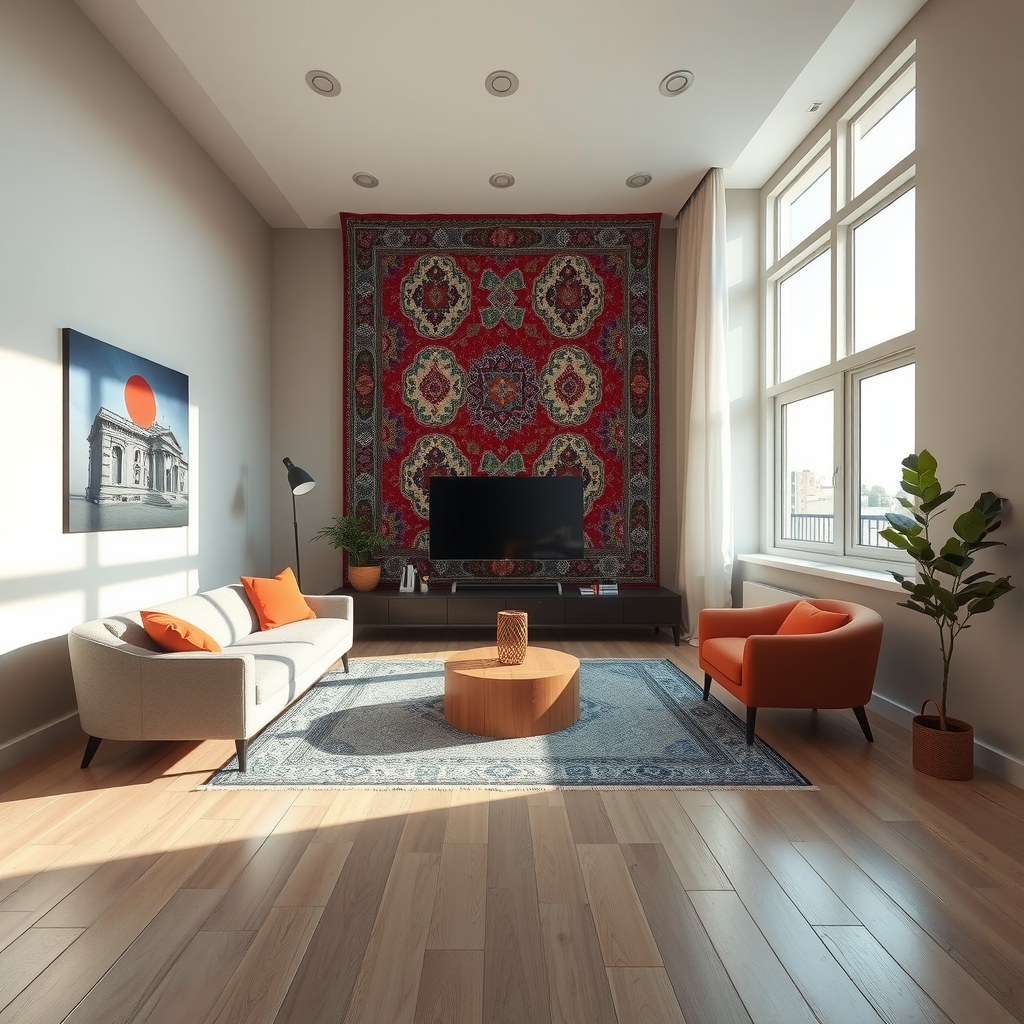
Contemporary living space incorporating traditional Azerbaijani textile patterns
The resurgence of interest in traditional Azerbaijani design elements reflects a broader global trend toward cultural preservation and authentic expression in interior design. As Azerbaijan continues to develop economically and culturally, designers are finding innovative ways to celebrate their heritage without sacrificing modern functionality and comfort.
The Rich Tapestry of Azerbaijani Design Heritage
Azerbaijan's design legacy spans millennia, with influences from Persian, Turkish, and Russian cultures creating a distinctive aesthetic vocabulary. Traditional Azerbaijani homes featured intricate woodwork, hand-woven carpets with symbolic patterns, copper and brass metalwork, and vibrant ceramic tiles. These elements weren't merely decorative—they told stories, conveyed status, and connected families to their ancestral roots.
Leyla Mammadova, a prominent interior designer based in Baku, explains the significance of these traditional elements: "Every pattern in an Azerbaijani carpet has meaning. The boteh motif represents life and eternity, while geometric patterns often symbolize protection and prosperity. When we incorporate these into modern spaces, we're not just adding decoration—we're weaving stories and cultural memory into the fabric of contemporary life."
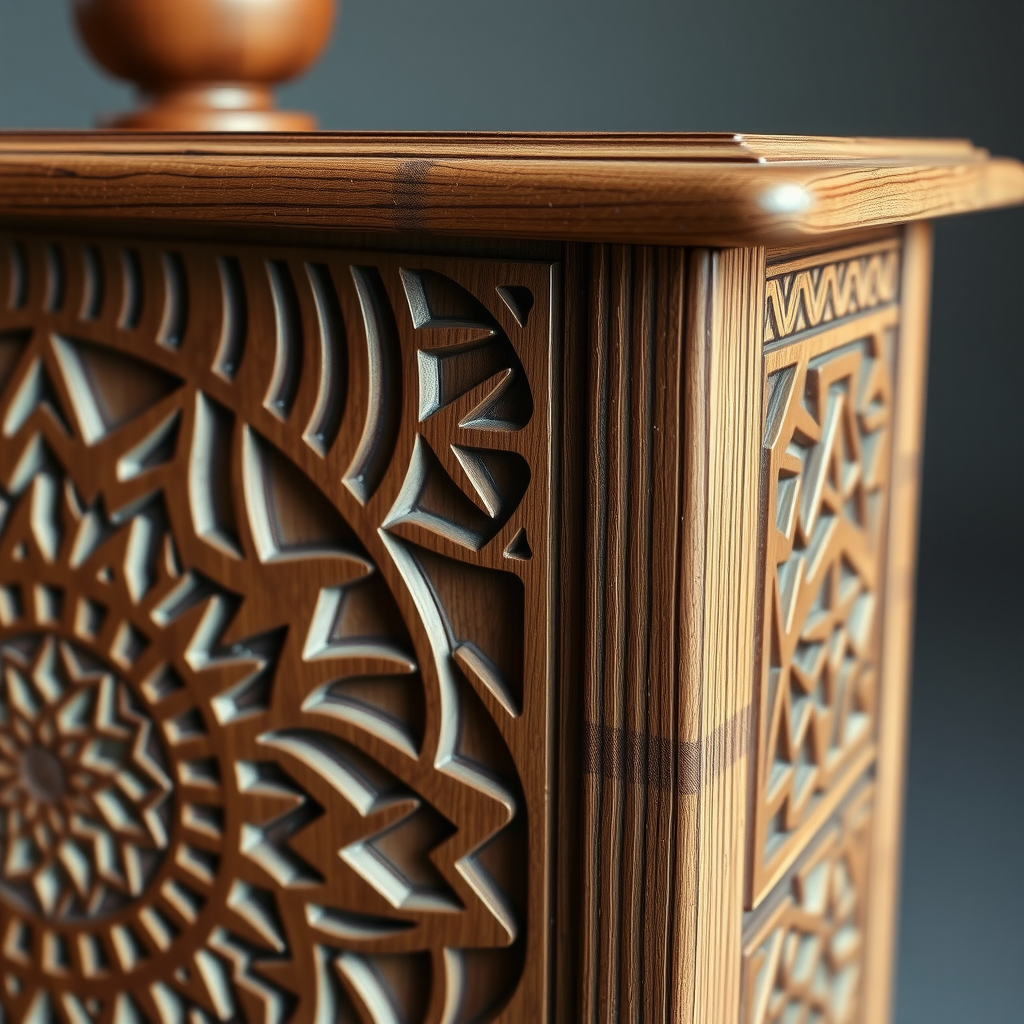
Hand-carved traditional patterns on contemporary furniture
Modern Interpretations of Traditional Craftsmanship
Today's Azerbaijani designers are finding creative ways to reinterpret traditional elements for contemporary spaces. Rather than recreating historical interiors wholesale, they're extracting key design principles and adapting them to modern lifestyles. This approach respects tradition while acknowledging the practical needs of 21st-century living.
Carpet Artistry in Contemporary Contexts
Azerbaijani carpets, recognized by UNESCO as Intangible Cultural Heritage, are perhaps the most iconic element being reimagined in modern interior design. Traditional carpets often covered entire floors and walls, creating warm, layered environments. Contemporary designers are using these textiles more selectively—as statement pieces, wall art, or inspiration for color palettes and pattern work.
Rashad Aliyev, a third-generation carpet weaver from Quba, has witnessed this evolution firsthand. His workshop now collaborates with interior designers to create pieces that honor traditional knotting techniques while exploring modern aesthetics. "Young designers come to us with ideas that would have shocked my grandfather," he laughs. "But the fundamental craft—the hand-knotting, the natural dyes, the attention to detail—remains unchanged. That's what makes these pieces authentic, even when they look contemporary."
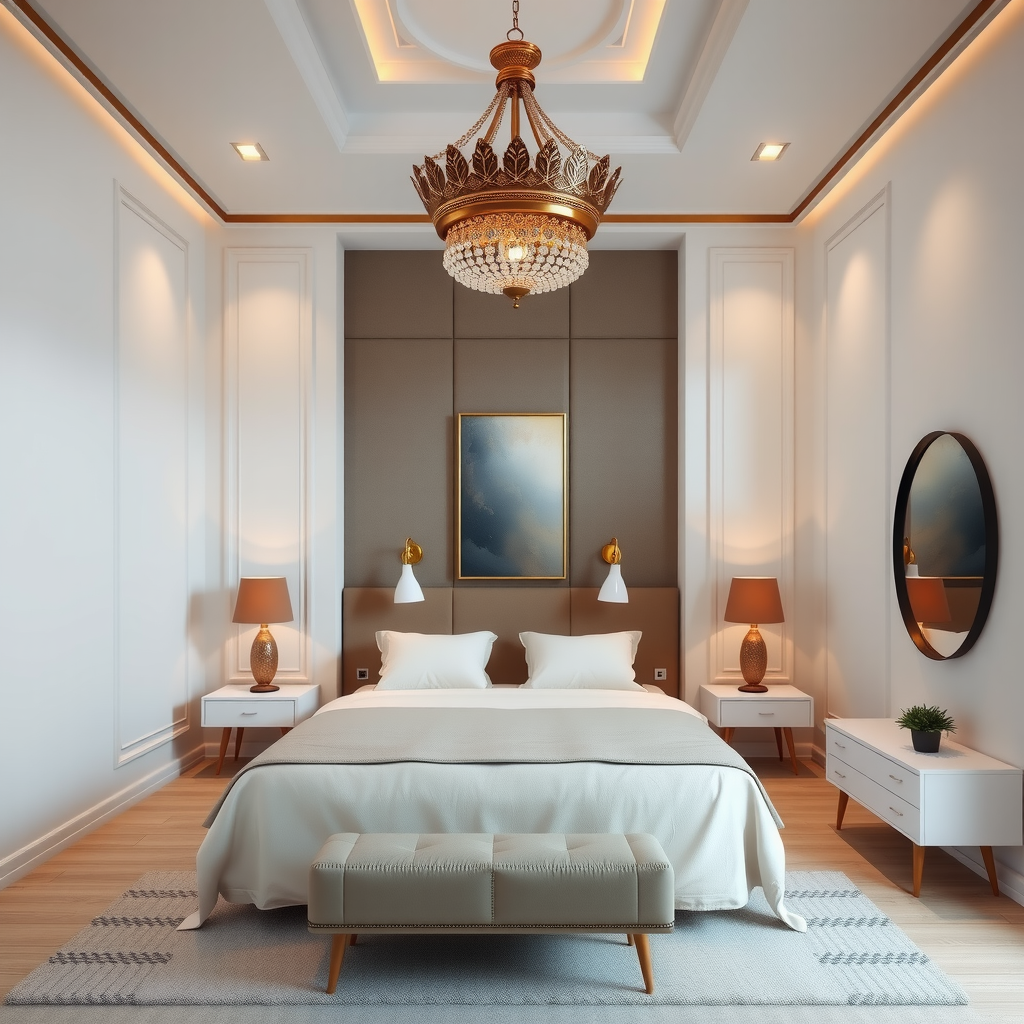
Traditional metalwork lighting in a minimalist bedroom setting
Metalwork and Architectural Details
Traditional Azerbaijani metalwork, particularly in copper and brass, is experiencing a renaissance in contemporary interior design. Historically used for everything from samovars to decorative screens, these crafts are now being adapted for modern lighting fixtures, cabinet hardware, and architectural accents.
Designer Nigar Huseynova specializes in integrating traditional metalwork into modern home renovation projects. "We work with artisans who still use centuries-old techniques—hand-hammering, engraving, and patination. But we're applying these skills to create pendant lights, door handles, and decorative panels that fit seamlessly into contemporary spaces. The contrast between the handcrafted warmth of the metal and the clean lines of modern architecture creates something truly special."
Preserving Artisan Skills Through Design Innovation
One of the most significant impacts of this design movement is its role in preserving traditional crafts. As younger generations increasingly pursue careers in technology and business, many traditional artisan skills face extinction. By creating demand for these crafts in contemporary contexts, designers are helping ensure their survival.
Kamran Ismayilov, a woodcarver from Sheki, represents this intersection of tradition and innovation. His workshop produces both traditional furniture and contemporary pieces featuring traditional carving techniques. "Ten years ago, I worried my children wouldn't continue this craft," he reflects. "Now, thanks to designers who value handwork, we have more orders than we can handle. Young people are even coming to learn the craft because they see it has a future."
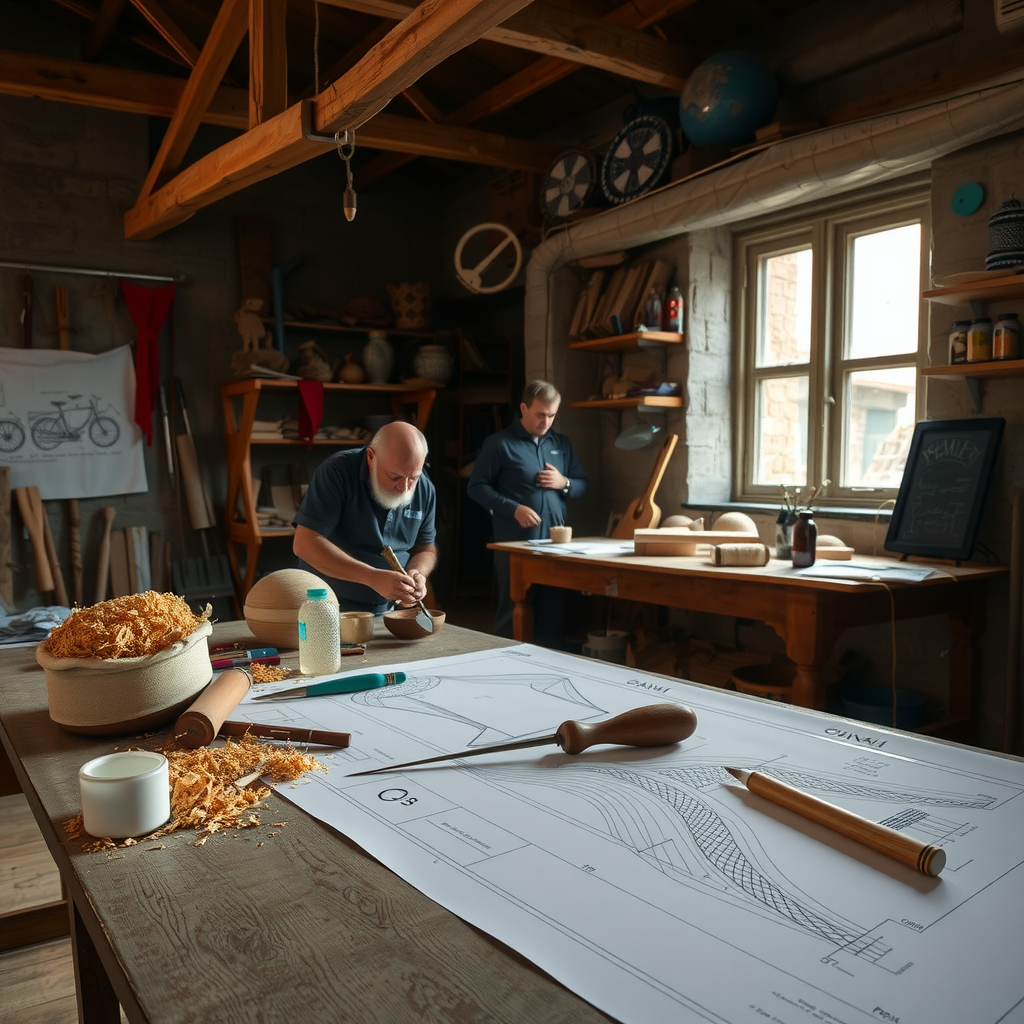
Traditional craftsmanship meets modern design planning
Educational Initiatives and Collaboration
Several design schools and cultural organizations in Azerbaijan are now facilitating collaborations between traditional artisans and contemporary designers. These programs ensure knowledge transfer while encouraging innovation. Students learn traditional techniques directly from master craftspeople, then explore how these skills can be applied to modern design challenges.
The Azerbaijan Design Institute, established in 2019, has become a hub for these collaborations. Director Aysel Mammadova describes their mission: "We're creating a space where a 70-year-old carpet weaver can work alongside a 25-year-old interior designer. Both learn from each other. The artisan gains understanding of contemporary aesthetics and market demands, while the designer develops deep appreciation for traditional techniques and their cultural significance."
Material Authenticity in Modern Spaces
Beyond specific decorative elements, contemporary Azerbaijani interior design is also embracing traditional materials and construction methods. Natural materials like stone, wood, and clay—staples of traditional architecture—are being used in ways that feel both authentic and modern.
This emphasis on natural materials aligns with global sustainability trends while maintaining cultural authenticity. Traditional Azerbaijani building methods often incorporated passive cooling and heating strategies, natural ventilation, and locally-sourced materials—principles that resonate strongly with contemporary environmental consciousness.
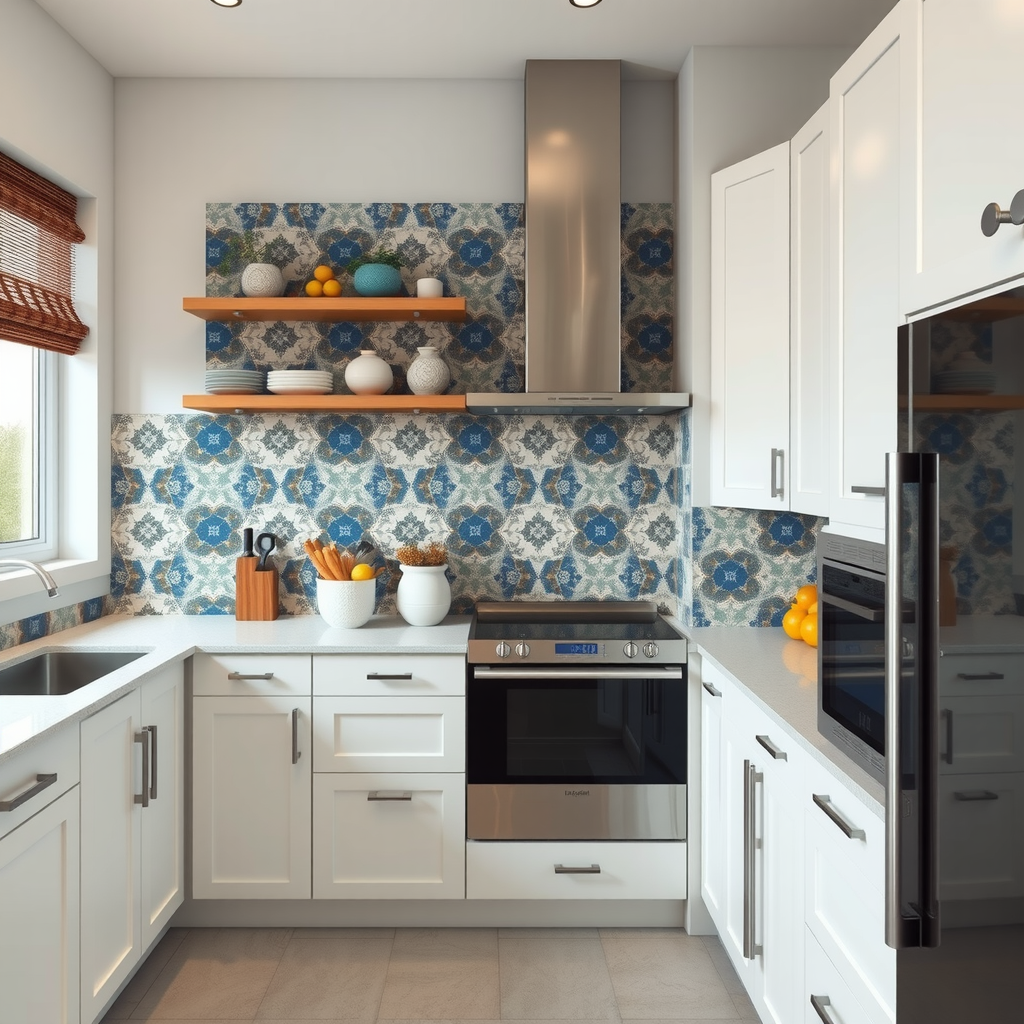
Traditional ceramic tilework in a modern kitchen design
Color Palettes Rooted in Tradition
Traditional Azerbaijani color schemes, derived from natural dyes and local landscapes, are influencing contemporary interior design choices. The rich terracottas of Baku's old city, the deep blues of Caspian waters, the warm ochres of desert regions, and the vibrant greens of mountain valleys all find expression in modern interiors.
Rather than using these colors in traditional combinations, contemporary designers are extracting individual hues and pairing them with neutral backgrounds or unexpected complementary shades. This approach creates spaces that feel connected to Azerbaijani landscapes and heritage while maintaining a fresh, contemporary sensibility.
Challenges and Opportunities
Despite the enthusiasm for blending traditional and contemporary elements, designers face several challenges. Authentic traditional craftsmanship is time-intensive and expensive, making it inaccessible for many clients. There's also the risk of superficial appropriation—using traditional motifs without understanding their cultural significance.
Nigar Huseynova addresses these concerns: "Education is crucial. We need clients to understand why a hand-knotted carpet costs more than a machine-made one, and why that investment matters. It's not just about aesthetics—it's about supporting living traditions and preserving cultural heritage. When clients understand this, they're usually willing to invest appropriately."
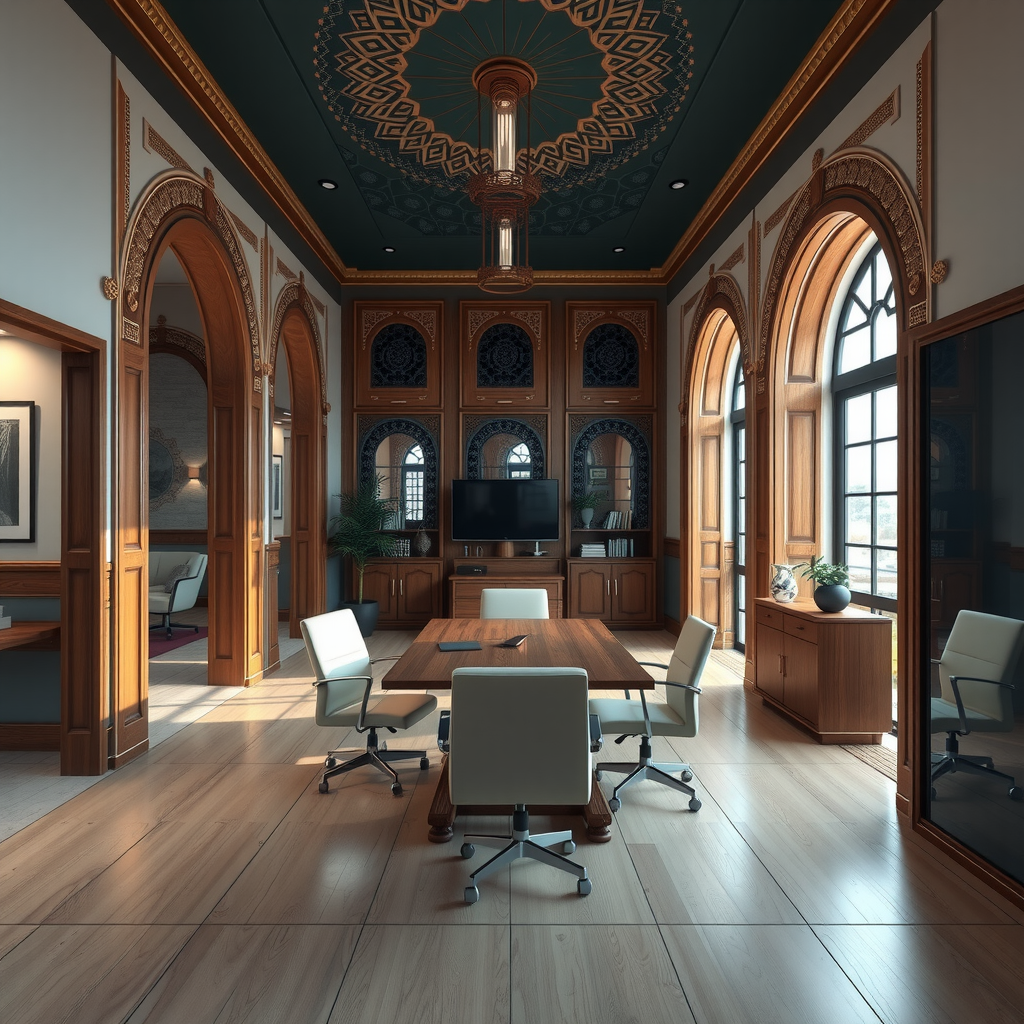
Traditional architectural elements in contemporary office design
The Role of Technology
Interestingly, technology is playing a role in preserving and promoting traditional design elements. Digital tools allow designers to experiment with traditional patterns and proportions before committing to physical production. 3D modeling helps clients visualize how traditional elements will work in contemporary spaces. Social media platforms showcase these fusion designs to global audiences, creating international interest in Azerbaijani craftsmanship.
Some artisans are even using technology to enhance traditional techniques. Laser cutting can create precise patterns that would take days to carve by hand, which can then be finished with traditional methods. This hybrid approach makes traditional designs more accessible while maintaining the essential handcrafted quality.
Looking Forward: The Future of Azerbaijani Interior Design
As Azerbaijan continues to develop and modernize, the integration of traditional elements into contemporary interior design appears poised to strengthen rather than diminish. Younger generations are showing increased interest in their cultural heritage, and international design trends favor authenticity and cultural specificity over generic modernism.
The success of this design movement offers lessons beyond Azerbaijan's borders. It demonstrates that modernization doesn't require abandoning tradition, and that cultural heritage can be a source of innovation rather than a constraint. By honoring the past while embracing the present, Azerbaijani designers are creating spaces that are both timeless and contemporary.
For homeowners and designers interested in this approach, the key is thoughtful integration rather than superficial decoration. Understanding the cultural significance of traditional elements, working with skilled artisans, and respecting the integrity of both traditional crafts and contemporary design principles creates interiors that are meaningful, beautiful, and enduring.
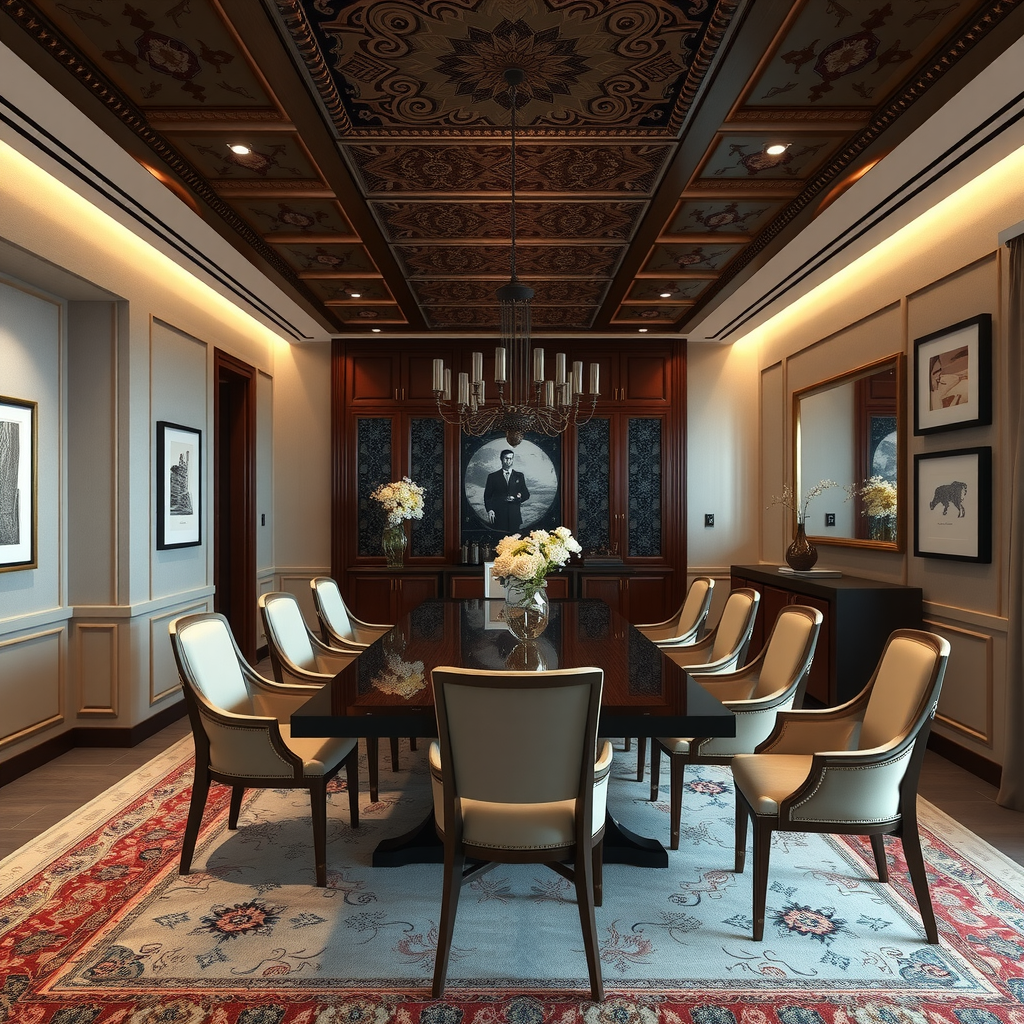
Harmonious blend of traditional and contemporary in dining space
As this design movement matures, it's creating not just beautiful spaces but also economic opportunities for artisans, educational pathways for young designers, and a model for cultural preservation through innovation. The homes and commercial spaces emerging from this fusion stand as testament to Azerbaijan's ability to honor its past while confidently embracing its future.
The blending of traditional Azerbaijani elements with contemporary interior design represents more than an aesthetic trend—it's a cultural statement about identity, continuity, and the enduring value of craftsmanship in an increasingly digital world. As these spaces demonstrate, the most compelling interiors are those that tell stories, connect us to our heritage, and create environments that nurture both body and spirit.